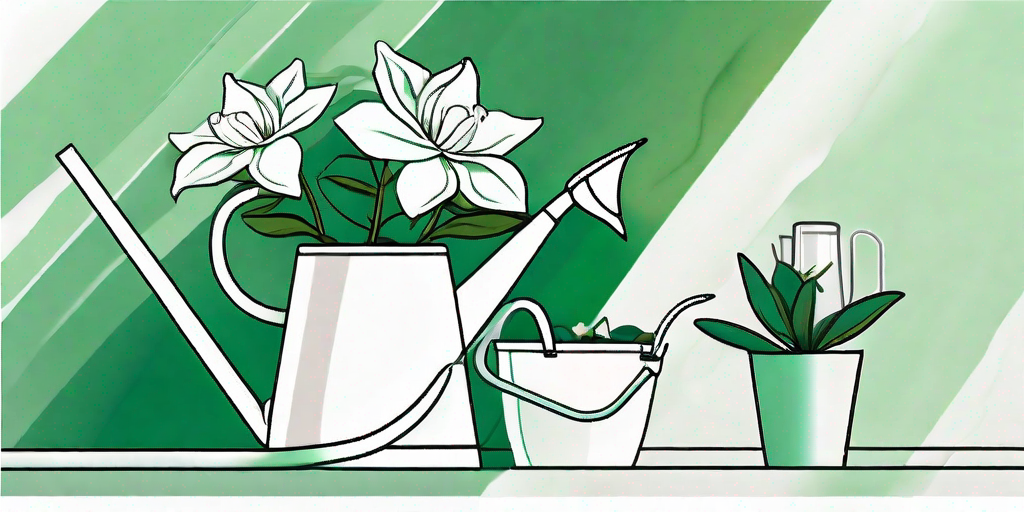
There's something undeniably enchanting about the gardenia. With its lush, glossy leaves and intoxicatingly fragrant blossoms, this plant is a true showstopper in any garden. But as any seasoned gardener will tell you, the gardenia is not for the faint of heart. It requires a certain level of care and attention to thrive. But fear not, dear reader, for we are about to embark on a journey into the world of gardenias, revealing all their secrets and showing you how to grow and care for this fragrant beauty.
The Gardenia: A Brief Introduction
Before we delve into the nitty-gritty of gardenia care, let's take a moment to appreciate this plant's rich history and unique characteristics. The gardenia, also known as Gardenia jasminoides, is native to the tropical and subtropical regions of Africa, southern Asia, Australasia and Oceania. Named after the Scottish-born American naturalist Dr. Alexander Garden, this plant is a member of the coffee family, Rubiaceae. Yes, you read that right. Your morning cup of joe and this fragrant beauty are distant cousins!
Known for its creamy white flowers and luscious green foliage, the gardenia is a popular choice for gardens and landscapes. Its intoxicating fragrance is often used in perfumes and aromatherapy. But enough with the small talk, let's get down to business and learn how to grow and care for this plant.
How to Grow a Gardenia
Now that we've gotten to know our plant a bit better, let's roll up our sleeves and get our hands dirty. Growing a gardenia requires a bit of patience and a lot of love, but the rewards are well worth the effort.
First things first, you'll need to choose the right location for your gardenia. These plants prefer a spot with full sun to light shade. They also need well-drained, rich, acidic soil. If your soil is more on the alkaline side, don't panic. You can easily amend it with organic matter like compost or peat moss to make it more acidic.
Once you've found the perfect spot, it's time to plant. Dig a hole that's twice as wide and just as deep as the root ball of your gardenia. Place the plant in the hole, making sure the top of the root ball is level with the soil surface. Backfill the hole with soil, firm it gently around the base of the plant, and water thoroughly.
And voila! You've just planted your very own gardenia. But the work doesn't stop here. Now, it's time to learn how to care for your plant.
Caring for Your Gardenia
Like a petulant diva, the gardenia demands constant attention. But don't let this deter you. With the right care, your gardenia will reward you with lush growth and fragrant blossoms.
Watering is crucial for gardenias. They prefer consistently moist, but not waterlogged, soil. Overwatering can lead to root rot, while underwatering can cause the buds to drop before they open. So, keep the soil evenly moist, especially during dry spells.
Feeding your gardenia is also important. Use a fertilizer designed for acid-loving plants, and feed your gardenia every two to four weeks during the growing season.
Pruning is another aspect of gardenia care. Prune your plant after it has finished blooming to maintain its shape and encourage bushier growth. But be careful not to overdo it. Gardenias don't take kindly to heavy pruning.
Common Gardenia Problems and How to Solve Them
Despite your best efforts, your gardenia might encounter a few bumps along the way. But don't despair. Most gardenia problems can be solved with a bit of know-how.
Yellow leaves, for instance, are a common issue with gardenias. This is often a sign of nutrient deficiency, specifically a lack of iron. To remedy this, apply a chelated iron supplement according to the package instructions.
Bud drop is another common problem. This can be caused by a variety of factors, including overwatering, underwatering, insufficient light, or a sudden change in temperature. To prevent bud drop, ensure your gardenia has the right growing conditions and try to minimize any environmental stress.
Frequently Asked Questions
Why are the leaves on my gardenia turning yellow?
Yellow leaves are often a sign of nutrient deficiency, specifically a lack of iron. Applying a chelated iron supplement should help remedy this issue.
Why are the buds on my gardenia dropping before they open?
Bud drop can be caused by a variety of factors, including overwatering, underwatering, insufficient light, or a sudden change in temperature. Ensure your gardenia has the right growing conditions and try to minimize any environmental stress.
How often should I water my gardenia?
Gardenias prefer consistently moist, but not waterlogged, soil. The exact frequency of watering will depend on your climate and the time of year, but a good rule of thumb is to water when the top inch of soil feels dry to the touch.
Conclusion
There you have it, the secrets of the gardenia revealed. With a bit of patience, a lot of love, and this guide, you're well on your way to growing and caring for this fragrant beauty. So, what are you waiting for? Roll up your sleeves, get your hands dirty, and start growing!















